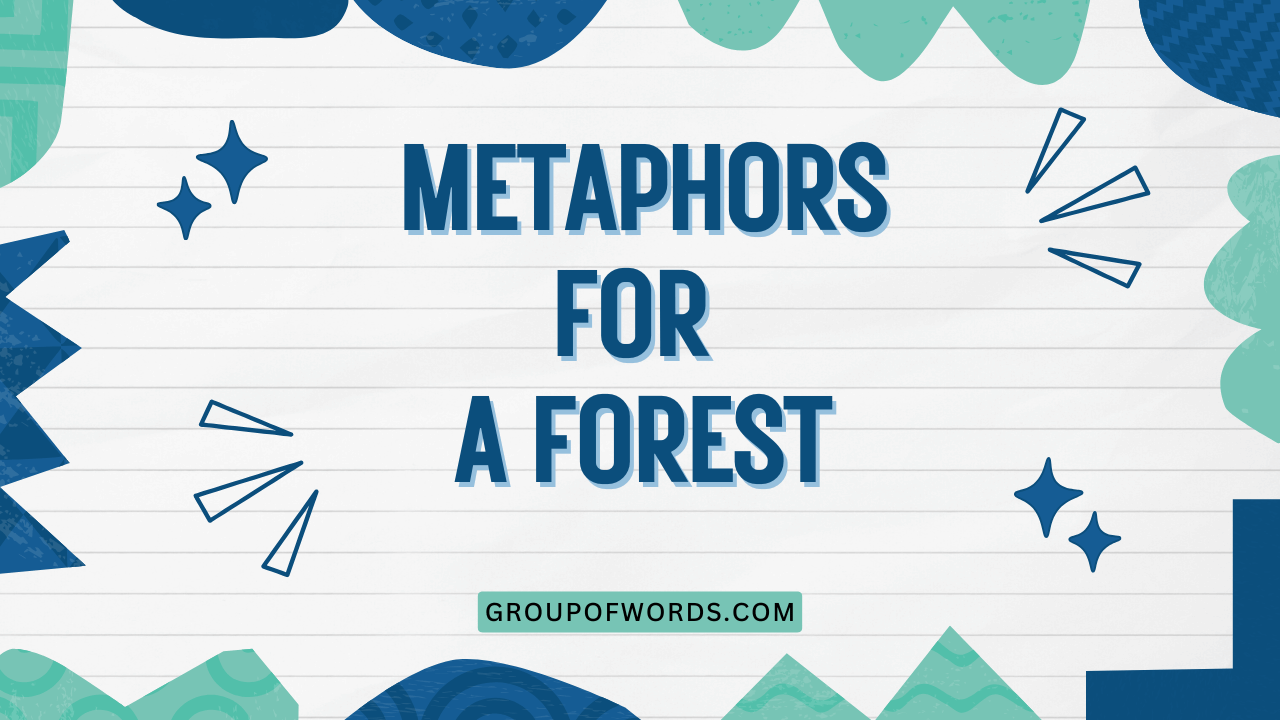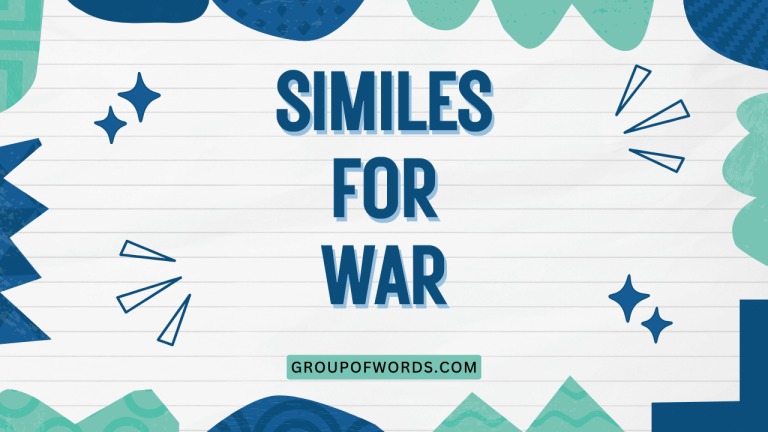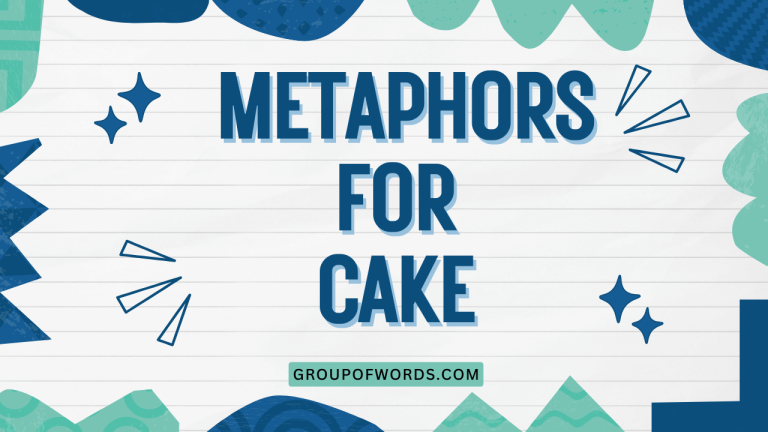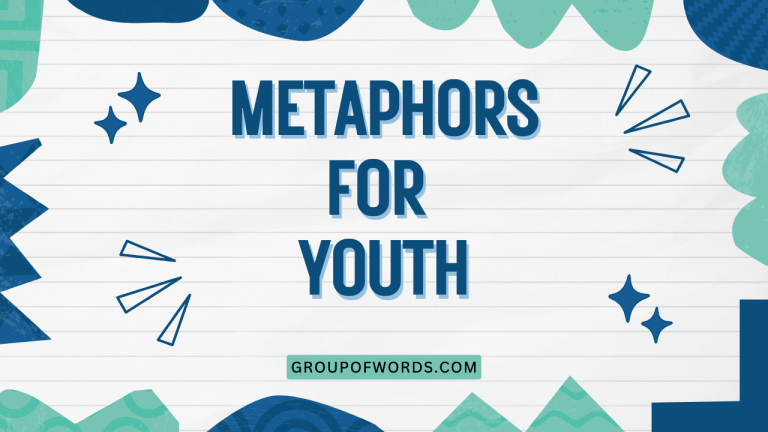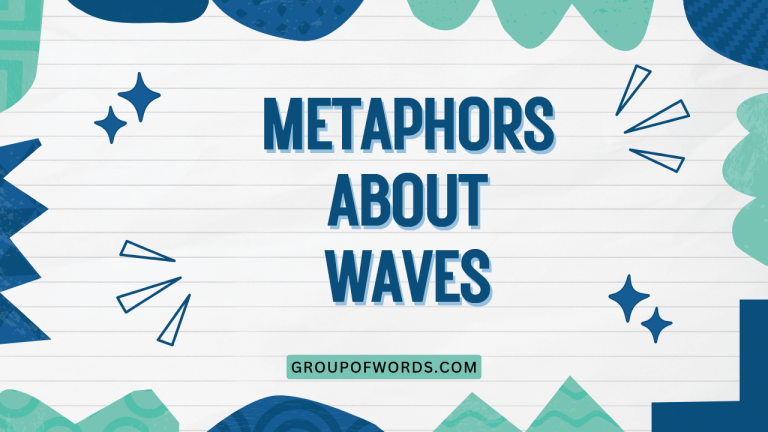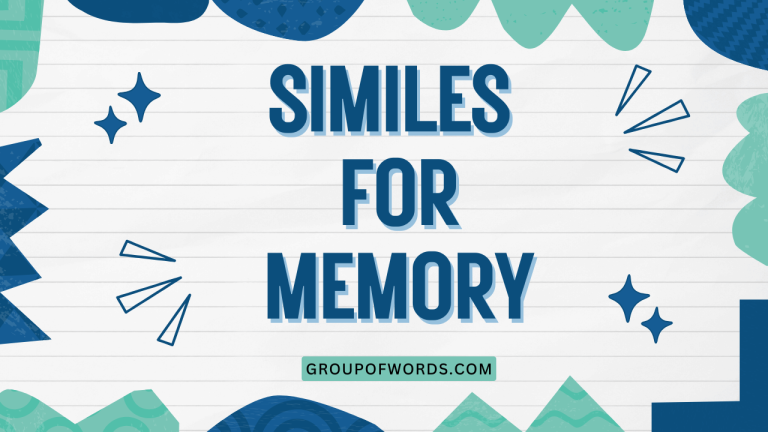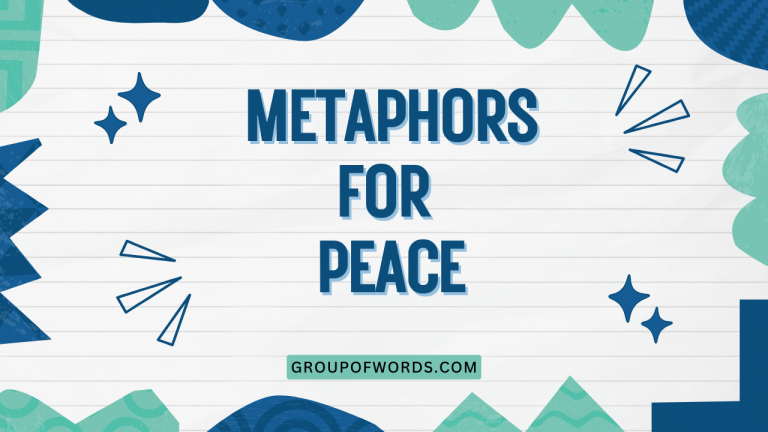Forest Metaphors: Exploring Figurative Language in Nature
Metaphors are powerful tools in the English language, allowing us to understand complex concepts by relating them to something familiar. When we use metaphors to describe a forest, we unlock a deeper understanding of its complex ecosystem, its beauty, and its significance.
This article explores the rich world of forest metaphors, providing a comprehensive guide for English learners of all levels. By understanding how these metaphors function, you can enhance your writing, deepen your comprehension of literature, and appreciate the natural world in a new light.
This guide caters to both beginners seeking a basic understanding and advanced learners looking to refine their skills.
Table of Contents
- Introduction
- What is a Forest Metaphor?
- Structural Breakdown of Forest Metaphors
- Types of Forest Metaphors
- Examples of Forest Metaphors
- Usage Rules for Forest Metaphors
- Common Mistakes with Forest Metaphors
- Practice Exercises
- Advanced Topics in Forest Metaphors
- Frequently Asked Questions
- Conclusion
What is a Forest Metaphor?
A metaphor is a figure of speech that directly compares two unlike things without using “like” or “as.” It asserts that one thing *is* another, implying a shared quality or characteristic. A forest metaphor, therefore, applies this concept to describe a forest by associating it with something else, creating a more vivid and insightful image. The function of a forest metaphor is to enhance understanding, evoke emotion, and add depth to descriptions of forests.
Forest metaphors can be found in literature, poetry, everyday conversation, and scientific writing. They allow us to explore the multifaceted nature of forests, from their physical characteristics to their ecological and symbolic significance.
These metaphors help us move beyond literal descriptions and tap into a richer, more imaginative understanding of the forest environment.
Structural Breakdown of Forest Metaphors
Understanding the structure of a metaphor helps in both interpreting and creating them effectively. A metaphor typically consists of two main elements: the tenor and the vehicle. The tenor is the subject being described (in this case, the forest), and the vehicle is the thing it’s being compared to. The connection between the tenor and vehicle is the ground, which refers to the shared characteristics or qualities that make the comparison meaningful.
For example, in the metaphor “The forest is a cathedral,” the tenor is the forest, and the vehicle is the cathedral. The ground might include characteristics such as grandeur, solemnity, a sense of awe, or spiritual significance.
The effectiveness of a metaphor hinges on how well the ground resonates with the audience, creating a connection that illuminates the tenor.
Let’s break down another example: “The forest is a symphony.” Here, the tenor is the forest, and the vehicle is the symphony. The ground might be the complex interplay of different elements (trees, animals, sounds) creating a harmonious whole, or the dynamic and ever-changing nature of the ecosystem.
Types of Forest Metaphors
Forest metaphors are diverse and can be categorized based on the specific figurative techniques they employ. Here are some common types:
Personification
Personification involves attributing human qualities or actions to inanimate objects or abstract concepts. In the context of forests, this might involve describing trees as whispering secrets or the forest floor as breathing. This technique adds a sense of life and agency to the forest, making it more relatable and engaging.
Symbolism
Symbolism uses objects or concepts to represent something else. Forests are often used as symbols of life, growth, mystery, or even danger. The specific symbolic meaning can vary depending on the context and the cultural background. For example, a dark, dense forest might symbolize the unknown or the challenges of life, while a lush, vibrant forest might represent abundance and renewal.
Comparison
Comparison metaphors highlight similarities between the forest and something else, often to emphasize a particular characteristic. These metaphors can be simple and direct, such as “The forest is like a green ocean,” or more complex and nuanced. The key is to choose a vehicle that effectively conveys the desired meaning or impression.
Hyperbole
Hyperbole involves exaggeration for emphasis or effect. While less common than other types of metaphors, hyperbole can be used to create a dramatic or humorous image of the forest. For example, “The forest was so dense, it felt like walking through a wall” uses hyperbole to emphasize the forest’s thickness.
Examples of Forest Metaphors
The following tables provide numerous examples of forest metaphors, categorized for clarity and understanding. Each example is designed to illustrate the different types of metaphors and their potential applications.
Table 1: Personification in Forest Metaphors
This table showcases how personification brings the forest to life by giving it human-like qualities and actions.
| Metaphor | Explanation |
|---|---|
| The trees whispered secrets to the wind. | Trees are given the human action of whispering, suggesting a gentle, secretive communication. |
| The forest floor breathed with the rhythm of the seasons. | The forest floor is described as breathing, implying a life-like cycle of expansion and contraction. |
| The ancient oaks stood as silent guardians of the woods. | Oaks are personified as guardians, suggesting they are watchful protectors. |
| The river snaked its way through the heart of the forest. | The river is described as snaking, giving it a winding, animalistic movement. |
| The sun kissed the leaves with golden light. | The sun is personified as kissing, implying a gentle, loving touch. |
| The shadows danced among the trees. | Shadows are given the action of dancing, suggesting a playful, shifting movement. |
| The forest sighed as autumn approached. | The forest is described as sighing, implying a sense of weariness or resignation. |
| The wind howled through the branches like a hungry wolf. | The wind is personified as a howling wolf, creating a sense of danger and wildness. |
| The rain wept on the leaves. | Rain is given the human action of weeping, suggesting sadness or mourning. |
| The trees stretched their arms towards the sky. | Trees are described as stretching their arms, giving them a human-like gesture of reaching. |
| The forest held its breath as the storm approached. | The forest is personified as holding its breath, implying anticipation and tension. |
| The roots of the trees embraced the earth. | Roots are described as embracing, giving them a human-like gesture of affection and connection. |
| The leaves gossiped in the breeze. | Leaves are personified as gossiping, suggesting a light, chattering sound. |
| The forest grumbled under the weight of the snow. | The forest is described as grumbling, implying discomfort or complaint. |
| The flowers smiled at the sun. | Flowers are personified as smiling, suggesting happiness and openness. |
| The moss clung to the rocks like a velvet blanket. | Moss is described as clinging, giving it a sense of attachment and protection. |
| The fog crept through the trees like a silent ghost. | Fog is personified as creeping, suggesting a stealthy, ethereal presence. |
| The forest awakened with the dawn. | The forest is described as awakening, implying a sense of renewal and energy. |
| The stream chuckled as it flowed over the stones. | The stream is personified as chuckling, suggesting a light, joyful sound. |
| The forest dared the winter to come. | The forest is personified as daring, implying defiance and resilience. |
| The trees stood shoulder to shoulder, guarding the path. | The trees are personified as standing shoulder to shoulder, implying solidarity and protection. |
| The forest pondered the mysteries of the universe. | The forest is personified as pondering, suggesting deep thought and contemplation. |
Table 2: Symbolism in Forest Metaphors
This table shows how forests can represent various abstract ideas and concepts, adding layers of meaning to the description.
| Metaphor | Explanation |
|---|---|
| The forest is a symbol of life’s resilience. | The forest represents the ability to recover and thrive despite challenges. |
| The forest is a labyrinth of the mind. | The forest symbolizes the complexity and confusion of thoughts and emotions. |
| The forest is a sanctuary of peace. | The forest represents a place of refuge and tranquility. |
| The forest is a testament to nature’s power. | The forest symbolizes the strength and force of the natural world. |
| The forest is a mirror reflecting our inner selves. | The forest represents a way to understand our own thoughts and feelings. |
| The forest is a living library of ancient wisdom. | The forest symbolizes a repository of knowledge and experience. |
| The forest is a reminder of our connection to the earth. | The forest represents our dependence on and responsibility to the natural world. |
| The forest is a gateway to the unknown. | The forest symbolizes exploration, adventure, and the mysteries of life. |
| The forest is a tapestry woven with life’s threads. | The forest represents the interconnectedness of all living things. |
| The forest is a cathedral of green, a place of reverence. | The forest symbolizes a sacred space, inspiring awe and respect. |
| The forest is a fortress against the storms of life. | The forest symbolizes protection and resilience in the face of adversity. |
| The forest is a cradle of new beginnings. | The forest symbolizes hope, growth, and the potential for renewal. |
| The forest is a refuge for the weary soul. | The forest symbolizes comfort, solitude, and healing. |
| The forest is a playground for the imagination. | The forest symbolizes creativity, inspiration, and the freedom to explore. |
| The forest is a classroom where nature teaches its lessons. | The forest symbolizes learning, discovery, and the wisdom of the natural world. |
| The forest is a stage where life’s dramas unfold. | The forest symbolizes the ebb and flow of existence, with its triumphs and tragedies. |
| The forest is a gallery of nature’s masterpieces. | The forest symbolizes beauty, artistry, and the wonders of the natural world. |
| The forest is a symphony of sounds, a celebration of life. | The forest symbolizes harmony, diversity, and the joy of existence. |
| The forest is a dance of light and shadow, a play of contrasts. | The forest symbolizes balance, duality, and the interplay of opposing forces. |
| The forest is a journey of discovery, a path to enlightenment. | The forest symbolizes growth, transformation, and the pursuit of knowledge. |
| The forest is a mirror reflecting our impact on the planet. | The forest symbolizes our responsibility to protect and preserve the environment. |
| The forest is a reminder of what we stand to lose. | The forest symbolizes the fragility of nature and the importance of conservation. |
Table 3: Comparison in Forest Metaphors
This table illustrates how forests are compared to other entities to highlight specific attributes or create a vivid image.
| Metaphor | Explanation |
|---|---|
| The forest is a green ocean, with waves of trees swaying in the wind. | Compares the forest to an ocean, emphasizing its vastness and the movement of the trees. |
| The forest is like a cathedral, with towering trees reaching towards the heavens. | Compares the forest to a cathedral, highlighting its grandeur and spiritual atmosphere. |
| The forest is a living tapestry, woven with countless shades of green. | Compares the forest to a tapestry, emphasizing its intricate and varied textures. |
| The forest is a symphony of sounds, with birdsong as the melody. | Compares the forest to a symphony, highlighting the harmonious blend of natural sounds. |
| The forest is like a city, with each tree a building and each animal a resident. | Compares the forest to a city, emphasizing its complex ecosystem and diverse inhabitants. |
| The forest is a green lung, breathing life into the planet. | Compares the forest to a lung, highlighting its role in producing oxygen. |
| The forest is like a museum, filled with ancient artifacts of nature. | Compares the forest to a museum, emphasizing its historical and ecological significance. |
| The forest is a classroom, where nature teaches its lessons. | Compares the forest to a classroom, emphasizing its educational value. |
| The forest is like a playground, where animals frolic and play. | Compares the forest to a playground, highlighting its playful and dynamic nature. |
| The forest is a treasure chest, filled with hidden gems and natural wonders. | Compares the forest to a treasure chest, emphasizing its richness and value. |
| The forest is like a garden, cultivated by nature’s hand. | Compares the forest to a garden, emphasizing its beauty and natural order. |
| The forest is a sanctuary, providing refuge for all creatures. | Compares the forest to a sanctuary, emphasizing its protective and peaceful qualities. |
| The forest is like a puzzle, with each piece contributing to the whole. | Compares the forest to a puzzle, emphasizing its complexity and interconnectedness. |
| The forest is a maze, with winding paths and hidden secrets. | Compares the forest to a maze, emphasizing its mysterious and challenging nature. |
| The forest is like a fortress, protecting the land from erosion. | Compares the forest to a fortress, emphasizing its protective and stabilizing role. |
| The forest is a haven, providing shelter from the storm. | Compares the forest to a haven, emphasizing its safety and comfort. |
| The forest is like a time capsule, preserving the past for future generations. | Compares the forest to a time capsule, emphasizing its historical and cultural significance. |
| The forest is a canvas, painted with the colors of nature. | Compares the forest to a canvas, emphasizing its beauty and artistic qualities. |
| The forest is like a song, with each element contributing to the melody. | Compares the forest to a song, emphasizing its harmonious and expressive nature. |
| The forest is a stage, where life’s dramas unfold. | Compares the forest to a stage, emphasizing its dynamic and theatrical qualities. |
| The forest is like a mirror, reflecting our impact on the environment. | Compares the forest to a mirror, emphasizing our responsibility to protect it. |
| The forest is a bridge, connecting us to the natural world. | Compares the forest to a bridge, emphasizing its role in connecting us to nature. |
Table 4: Hyperbole in Forest Metaphors
This table shows how exaggeration can be used to emphasize certain characteristics of the forest, creating a dramatic effect.
| Metaphor | Explanation |
|---|---|
| The trees were so tall, they tickled the belly of the sky. | Exaggerates the height of the trees to an absurd degree, creating a whimsical image. |
| The forest was so dense, you could get lost for a lifetime. | Exaggerates the density of the forest, emphasizing its vastness and potential for disorientation. |
| The silence of the forest was so profound, you could hear your own heartbeat echoing. | Exaggerates the silence of the forest, emphasizing its stillness and tranquility. |
| The forest was so ancient, it had witnessed the birth of stars. | Exaggerates the age of the forest, creating a sense of timelessness and historical significance. |
| The forest was so alive, it vibrated with energy. | Exaggerates the vitality of the forest, emphasizing its dynamism and vibrancy. |
| The forest was so green, it could cure blindness. | Exaggerates the vividness of the forest’s color, creating a striking image. |
| The forest was so full of life, it overflowed with creatures. | Exaggerates the abundance of life in the forest, emphasizing its biodiversity. |
| The forest was so fragrant, it could perfume the entire world. | Exaggerates the scent of the forest, creating an olfactory image of overwhelming fragrance. |
| The forest was so mysterious, it held secrets that could never be unlocked. | Exaggerates the enigmatic nature of the forest, emphasizing its hidden depths. |
| The forest was so magical, it could transport you to another realm. | Exaggerates the enchanting qualities of the forest, creating a sense of wonder and fantasy. |
| The forest was so vast, it stretched to the edge of the world. | Exaggerates the size of the forest, emphasizing its immensity and scope. |
| The forest was so silent, you could hear the grass growing. | Exaggerates the silence of the forest, emphasizing its stillness and peace. |
| The forest was so dark, you couldn’t see your hand in front of your face. | Exaggerates the darkness of the forest, creating a sense of mystery and foreboding. |
| The forest was so noisy, it deafened the ears with its sounds. | Exaggerates the loudness of the forest, emphasizing its vibrant and chaotic energy. |
| The forest was so alive, it pulsed with the rhythm of the earth. | Exaggerates the liveliness of the forest, emphasizing its connection to nature. |
| The forest was so still, time stood still within its boundaries. | Exaggerates the stillness of the forest, creating a sense of timelessness and peace. |
| The forest was so beautiful, it could make angels weep. | Exaggerates the beauty of the forest, creating a sense of awe and wonder. |
| The forest was so deep, it held the secrets of the universe. | Exaggerates the depth of the forest, emphasizing its mysterious and profound nature. |
| The forest was so wild, it tamed the hearts of men. | Exaggerates the untamed nature of the forest, emphasizing its power and allure. |
| The forest was so untouched, it was as pristine as the day it was born. | Exaggerates the purity of the forest, emphasizing its unspoiled beauty. |
Usage Rules for Forest Metaphors
Using forest metaphors effectively requires careful consideration of the context and the desired effect. Here are some key rules to keep in mind:
- Clarity: Ensure that the comparison is clear and understandable. The vehicle should be something that the audience can easily relate to.
- Relevance: The shared characteristics between the tenor and the vehicle (the ground) should be relevant and meaningful.
- Originality: Strive for fresh and original metaphors that avoid clichés. Overused metaphors lose their impact.
- Consistency: Maintain consistency in your metaphorical language. Avoid mixing metaphors that create conflicting or confusing images.
- Appropriateness: Consider the tone and purpose of your writing. Metaphors should enhance, not detract from, your message.
Exceptions and Special Cases:
While consistency is generally important, there are situations where a deliberate mixing of metaphors can be effective, especially in creative writing. However, this should be done with intention and skill to avoid confusion.
Common Mistakes with Forest Metaphors
Here are some common mistakes to avoid when using forest metaphors:
- Mixed Metaphors: Combining metaphors that create illogical or contradictory images.
- Incorrect: “The forest is a symphony of silence, drowning in a sea of green.” (Mixing auditory and visual metaphors)
- Correct: “The forest is a symphony of sounds, with each creature contributing to the chorus.”
- Clichés: Using overused metaphors that have lost their impact.
- Incorrect: “The forest is a jungle out there.” (Clichéd and lacks originality)
- Correct: “The forest is a dense maze, with hidden paths and unexpected turns.”
- Inappropriate Comparisons: Choosing vehicles that don’t effectively convey the intended meaning.
- Incorrect: “The forest is a refrigerator.” (Lacks a clear connection and doesn’t enhance understanding)
- Correct: “The forest is a larder, providing sustenance for a multitude of creatures.”
Practice Exercises
Test your understanding of forest metaphors with these exercises.
Exercise 1: Identifying Metaphors
Identify the metaphors in the following sentences and explain what is being compared.
| Question | Answer |
|---|---|
| 1. The forest is a green lung, breathing life into the planet. | Metaphor: “The forest is a green lung.” Comparison: Forest is compared to a lung. |
| 2. The trees whispered secrets to the passing breeze. | Metaphor: “The trees whispered secrets.” Personification: Trees are given human-like qualities. |
| 3. The forest floor was a carpet of fallen leaves. | Metaphor: “The forest floor was a carpet.” Comparison: Forest floor is compared to a carpet. |
| 4. The forest is a sanctuary, a place of refuge and peace. | Metaphor: “The forest is a sanctuary.” Comparison: Forest is compared to a sanctuary. |
| 5. The forest is a living library, filled with ancient stories. | Metaphor: “The forest is a living library.” Comparison: Forest is compared to a library. |
| 6. The forest is a fortress against the harsh winter winds. | Metaphor: “The forest is a fortress.” Comparison: Forest is compared to a fortress. |
| 7. The sunlight painted golden streaks across the forest floor. | Metaphor: “The sunlight painted golden streaks.” Personification: Sunlight is given human-like qualities. |
| 8. The forest’s silence was a deep, enveloping blanket. | Metaphor: “The forest’s silence was a deep, enveloping blanket.” Comparison: Silence is compared to a blanket. |
| 9. The forest is a treasure chest, filled with natural wonders. | Metaphor: “The forest is a treasure chest.” Comparison: Forest is compared to a treasure chest. |
| 10. The forest is a mirror reflecting the soul of nature. | Metaphor: “The forest is a mirror.” Comparison: Forest is compared to a mirror. |
Exercise 2: Creating Forest Metaphors
Create your own forest metaphors using the following prompts:
| Prompt | Possible Answer |
|---|---|
| 1. The sound of the forest… | The sound of the forest is a gentle lullaby, soothing the soul. |
| 2. The trees in the forest… | The trees in the forest are silent witnesses to the passage of time. |
| 3. The darkness of the forest… | The darkness of the forest is a velvet curtain, hiding secrets untold. |
| 4. The forest is like… | The forest is like a green cathedral, inspiring awe and reverence. |
| 5. The forest symbolizes… | The forest symbolizes the resilience and interconnectedness of life. |
| 6. The forest floor is… | The forest floor is a tapestry woven with fallen leaves and mossy stones. |
| 7. The wind through the trees… | The wind through the trees is a whispering voice, sharing ancient stories. |
| 8. The forest is a reminder of… | The forest is a reminder of our connection to the natural world. |
| 9. The animals in the forest… | The animals in the forest are the vibrant notes in nature’s symphony. |
| 10. The forest’s beauty is… | The forest’s beauty is a timeless masterpiece, captivating the senses. |
Exercise 3: Correcting Mixed Metaphors
Identify and correct the mixed metaphors in the following sentences.
| Question | Answer |
|---|---|
| 1. The forest is a symphony of silence, drowning in a sea of green. | Corrected: The forest is a symphony of sounds, with each creature contributing to the chorus. |
| 2. The trees are the backbone of the forest, a beacon of hope. | Corrected: The trees are the backbone of the forest, providing strength and support. |
| 3. The forest is a treasure chest of opportunities, but we must grab the bull by the horns. | Corrected: The forest is a treasure chest of opportunities, waiting to be discovered. |
| 4. The forest is a melting pot of diversity, a beacon of hope in a sea of despair. | Corrected: The forest is a melting pot of diversity, a vibrant ecosystem teeming with life. |
| 5. The forest is a breath of fresh air, a slippery slope to disaster. | Corrected: The forest is a breath of fresh air, a sanctuary of peace and tranquility. |
| 6. The forest is a green ocean, a concrete jungle waiting to be explored. | Corrected: The forest is a green ocean, a vast expanse of natural beauty. |
| 7. The forest is a tapestry of life, a double-edged sword that must be wielded carefully. | Corrected: The forest is a tapestry of life, woven with intricate threads of interconnectedness. |
| 8. The forest is a blank canvas, a Pandora’s box filled with hidden dangers. | Corrected: The forest is a blank canvas, waiting to be filled with the colors of nature. |
| 9. The forest is a fragile ecosystem, a diamond in the rough that must be polished. | Corrected: The forest is a fragile ecosystem, a precious gem that must be protected. |
| 10. The forest is a sleeping giant, a ticking time bomb waiting to explode. | Corrected: The forest is a sleeping giant, a source of untapped potential and wisdom. |
Advanced Topics in Forest Metaphors
For advanced learners, exploring the use of extended metaphors and allegories involving forests can deepen their understanding. An extended metaphor is a metaphor that is developed over several lines or even an entire work. An allegory is a story in which characters and events represent abstract ideas or moral qualities. Analyzing how forests are used in these contexts can reveal deeper thematic and symbolic meanings.
Consider, for example, how J.R.R. Tolkien uses the Old Forest in *The Lord of the Rings* as an extended metaphor for the untamed and often dangerous aspects of nature.
Or, explore how forests are used in fairy tales as allegorical representations of the challenges and transformations of life.
Frequently Asked Questions
- What is the difference between a metaphor and a simile?
A metaphor directly compares two unlike things without using “like” or “as,” while a simile uses “like” or “as” to make the comparison. For example, “The forest is a cathedral” is a metaphor, while “The forest is like a cathedral” is a simile.
- Why are metaphors important in writing?
Metaphors add depth, imagery, and emotional resonance to writing. They help readers understand complex concepts by relating them to something familiar and create a more engaging and memorable experience.
- How can I avoid using clichés in my metaphors?
Strive for originality by thinking creatively and exploring unconventional comparisons. Consider the specific qualities you want to emphasize and choose vehicles that are fresh and unexpected.
- What is a mixed metaphor, and why should I avoid it?
A mixed metaphor combines two or more metaphors that create illogical or contradictory images. It can confuse the reader and weaken the impact of your writing.
- How do I choose the right metaphor for my writing?
Consider the context, tone, and purpose of your writing. Choose a vehicle that is relevant, clear, and appropriate for your audience. Ensure that the shared characteristics between the tenor and vehicle are meaningful and contribute to your message.
- Can metaphors be used in scientific writing?
Yes, metaphors can be used in scientific writing to explain complex concepts in a more accessible way. However, it’s important to use them carefully and ensure that they don’t oversimplify or distort the scientific information.
- How can I improve my ability to create effective metaphors?
Practice regularly by experimenting with different comparisons and exploring the nuances of language. Read widely and pay attention to how other writers use metaphors effectively. Seek feedback from others on your writing and be open to constructive criticism.
- Are there cultural differences in the interpretation of forest metaphors?
Yes, the symbolic meaning of forests can vary across cultures. Some cultures may view forests as sacred spaces, while others may associate them with danger or mystery. It’s important to be aware of these cultural differences when interpreting or creating forest metaphors.
Conclusion
Mastering the art of forest metaphors opens up a world of creative expression and deeper understanding. By recognizing the different types of metaphors, understanding their structure, and avoiding common mistakes, you can enhance your writing and communication skills.
Remember to practice regularly, experiment with different comparisons, and be mindful of the context and audience. The ability to use metaphors effectively is a valuable asset for any English learner, enabling you to express your ideas with greater clarity, creativity, and impact.
Keep exploring the beauty and complexity of the forest, and let your imagination soar.
